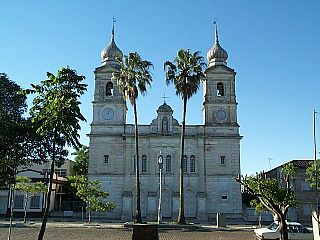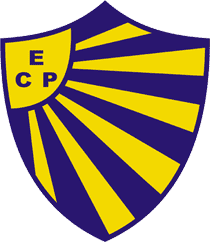
The municipalities of Brazil are administrative divisions of the Brazilian states. Brazil currently has 5,570 municipalities, which, given the 2019 population estimate of 210,147,125, makes an average municipality population of 37,728 inhabitants. The average state in Brazil has 214 municipalities. Roraima is the least subdivided state, with 15 municipalities, while Minas Gerais is the most subdivided state, with 853.

Rio Grande do Sul is a state in the southern region of Brazil. It is the fifth-most-populous state and the ninth largest by area. Located in the southernmost part of the country, Rio Grande do Sul is bordered clockwise by Santa Catarina to the north and northeast, the Atlantic Ocean to the east, the Uruguayan departments of Rocha, Treinta y Tres, Cerro Largo, Rivera and Artigas to the south and southwest, and the Argentine provinces of Corrientes and Misiones to the west and northwest. The capital and largest city is Porto Alegre. The state has the highest life expectancy in Brazil, and the crime rate is relatively low compared to Brazilian national average.

Pelotas is a Brazilian city and municipality (município), the third most populous in the southern state of Rio Grande do Sul. Pelotas is located 270 km (168 mi) from Porto Alegre, the capital city of the state, and 130 km (80.8 mi) from the Uruguayan border. The Lagoa dos Patos lies to the east and the São Gonçalo Channel lies to the south, separating Pelotas from the city of Rio Grande.
Spend A Buck was an American thoroughbred race horse.

Lagoa dos Patos is the largest lagoon in Brazil and the largest barrier-lagoon in South America. It is located in the state of Rio Grande do Sul, southern Brazil. It covers an area of 10,000 km2 (3,900 sq mi), is 174 miles (280 km) long and has a maximum width of 44 miles (60 km).

Grêmio Esportivo Brasil, also known as Brasil de Pelotas or Xavante, is a Brazilian football team in Pelotas, Rio Grande do Sul. It was founded on September 7, 1911. The club mascot is an Xavante Indian. The team wears red and black colors. The club has as nicknames Xavante, Rubro-Negro and Team of Warriors, due to its history of victories and classifications with the claw of its players. At the moment it contests the Series B of the Brazilian Championship and Gauchão Series A.

Bagé is a city located in the state of Rio Grande do Sul, Brazil. In 2018, its population was 120,943 in a total area of 4,096 km2. It was the seventeenth largest city in the state according to the 2011 census. The city was founded in 1811 and given city status in 1859. Due to its strategic border location, Bagé has remained of significant military importance. Prior to official reorganization as a city, Bagé was seized by military forces from Paraguay and Argentina.

The Río de la Plata basin, more often called the River Plate basin in scholarly writings, sometimes called the Platine basin or Platine region, is the 3,170,000-square-kilometre (1,220,000 sq mi) hydrographical area in South America that drains to the Río de la Plata. It includes areas of southeastern Bolivia, southern and central Brazil, the entire country of Paraguay, most of Uruguay, and northern Argentina. Making up about one fourth of the continent's surface, it is the second largest drainage basin in South America and one of the largest in the world.

Rio Grande is a municipality (município) and one of the oldest cities in the Brazilian state of Rio Grande do Sul. It was the state capital from 1835 to 1845. It is the most important port city in the state and has one of the most important maritime ports in Brazil.

Rosário do Sul is a Brazilian municipality in the southwestern part of the state of Rio Grande do Sul. The population is 40,773 in an area of 4,369.65 km². Its elevation is 151 m. It is located 385 km west of the state capital of Porto Alegre. Its main industry is agriculture. Many Argentine and Uruguayan tourists visits during the spring, with a large infrastructure to accommodate the visitors.

Capão do Leão is a Brazilian municipality in the southern part of the state of Rio Grande do Sul. The population is 25,382 in an area of 785.37 km². The city hosts the main campus of Universidade Federal de Pelotas, the largest higher education institution in the southern portion of Rio Grande do Sul.

The Pelotas Microregion is a microregion in the southeastern part of the state of Rio Grande do Sul, Brazil. The area is 10,306.601 km².

Muçum is a little town in the state of Rio Grande do Sul, Brazil.

Esporte Clube Pelotas, usually known simply as Pelotas, is a Brazilian football club in Pelotas, Rio Grande do Sul. The club competed several times in the Campeonato Brasileiro Série B and in the Campeonato Brasileiro Série C, and won the Campeonato Gaúcho in 1930. Esporte Clube Pelotas women's football team competed in the 2008 Copa do Brasil de Futebol Feminino.
SAVAG – Sociedade Anônima Viação Aérea Gaúcha was a Brazilian airline founded in 1946 that operated mainly in the state of Rio Grande do Sul. It was absorbed by Cruzeiro do Sul in 1966.
The Grande Prêmio Bento Gonçalves is a Group I is a left-handed flat race for three-year-olds and up in Brazil.
Grande Premio Protetora do Turfe is a Grade III left-handed flat race for three-year-old horses and up (3yo+) thoroughbreds in Brazil.

The Copa Verde is an annual regional knockout football competition that started in 2014, and played by 24 teams from the North and Central-West regions, plus Espírito Santo.
The Campeonato da Região Sul-Fronteira, commonly known as the Copa Sul-Fronteira, is an annual competition organized by the Rio Grande do Sul state football federation for clubs that are in the first, second and third divisions of the Campeonato Gaúcho and are located in the southern half of the state. It is held in the second half of the year and usually clubs participating in the higher levels of the Campeonato Brasileiro do not participate with the first team squad, using his academy.
The Pampa Horse is a breed of spotted, or pinto, horse that evolved in largely unknown parts of Brazil, from horses that had been brought to South America in the early 16th century. They are an obedient, all-purpose breed, with uses in agriculture, equestrian, and general riding. These gaited horses combine the conformational characteristics of Brazilian Horses with a pinto spotting pattern of white and dark coat colors. The breed was developed from a base of spotted horses of the Mangalarga Marchador, Campolina, Brazilian crossbred horses, and others. It is a color breed: only pinto horses may be registered.













